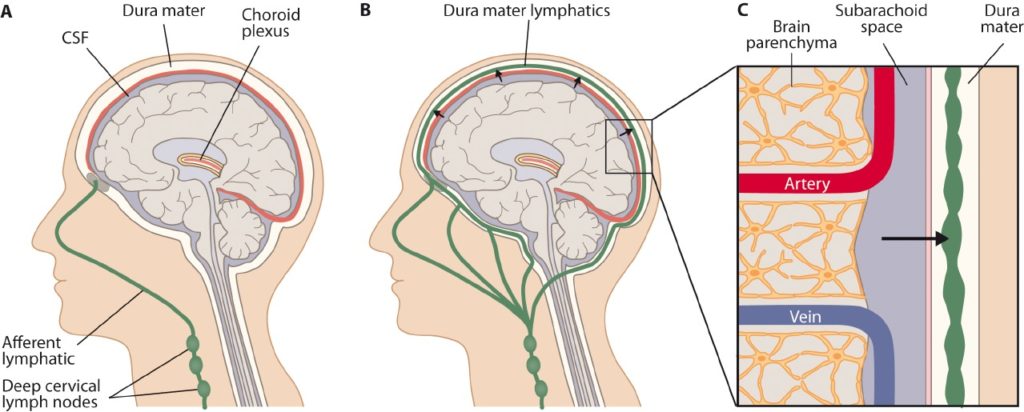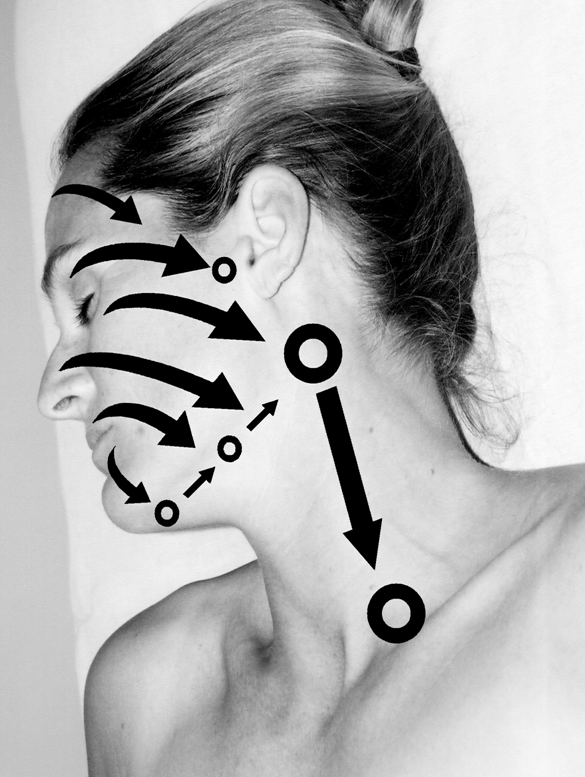Autism, or autism spectrum disorder (ASD), refers to a broad range of conditions characterized by challenges with social skills, repetitive behaviors, speech and nonverbal communication; according to the Centers for Disease Control and Prevention, autism affects an estimated 1 in 44 children in the United States (2018).
 The etiology of autism is still unclear; research suggests that autism develops from a combination of genetic and nongenetic, or environmental, influences; there is a growing consensus for the role of neuro-inflammation (inflammatory response within the brain or spinal cord) in the origination and development of ASD.
The etiology of autism is still unclear; research suggests that autism develops from a combination of genetic and nongenetic, or environmental, influences; there is a growing consensus for the role of neuro-inflammation (inflammatory response within the brain or spinal cord) in the origination and development of ASD.
Researchers discovered that lesions in the brains of autistic individuals, which were associated with the accumulation of excessive cerebrospinal fluid in the subarachnoid space (the area between brain membranes), significantly correlated with the severity of the observed symptoms (1), and suggested that these lesions and fluid accumulation were possibly a result of restricted flow of lymph fluid at the level of the deep cervical lymph nodes.
Chronic or excessive neuro-inflammation is a distinguishing and almost universal characteristic of ASD and may be partially responsible for the behavioral features in Autism (2).
Enlarged cervical lymph nodes is a regular finding in ASD, and research suggests that there may be a significant association with otorhinolaryngologic (mouth, ears, nose and throat) infections and inflammations causing this enlargement (3). Swollen lymph nodes in the cervical area may cause a restriction of lymph flow from the brain, which in turn may be a root factor in the development of lesions and fluid accumulation inside the brain.
Lymphatic drainage system of the brain
Lymphatic vessels are found in all areas with blood supply. Until recently, the central nervous system (CNS) was an exception to this rule. The brain, which is supplied by blood vessels and part of the CNS, has been thought for many decades to function normally without classical lymphatic drainage vessels, as they have gone undiscovered due to their hidden location. In 2015, independent from each other, two different groups of researchers discovered the existence of a functional lymphatic vessel system surrounding the blood vessels in the brain’s meninges, the membranes enveloping the brain and spinal cord (4,5).
The brain lymphatic drainage system is composed of basement membrane-based pathway around blood vessels (intramural periarterial drainage), a brain-wide glymphatic pathway, and cerebrospinal fluid (CSF) drainage routes, including sinus-associated meningeal lymphatic vessels and olfactory lymphatic routes via the cribriform plate. Lymph fluid from these pathways are then connected to the deep lymph nodes of the neck, from where the lymph returns via larger lymph vessels into the venous system.

The role of Manual Lymph Drainage in ASD
The above research (6,7) suggests that lymphatic clearance of the brain may play an important role in neuro-immunological diseases such as ASD, and that manual lymphatic drainage techniques (MLD) at the level of deep cervical nodes may improve brain lymphatic drainage, possibly resulting in decrease of neuro-inflammation that is typical in autism.
The research furthermore suggests that MLD performed on the neck can be beneficial to autistic patients, as well as other neurological disorders associated with immune system dysfunction, such as Alzheimer’s disease or Parkinson’s disease, and represents a new and promising treatment option.

Lymphatic Drainage Pattern Head and Neck
Dear Lymphedema Blog Reader – if you like the contents on this website, please help to keep it going. A great amount of work and research is necessary to provide you with up-to-date information on this site. Your donation supports these efforts and associated administrative costs. Surplus funds will be donated to Lymphedema/Lipedema-related charitable endeavors. Please donate using the “Donate Now” button on the right upper hand of this page – Thank You!
Join Lymphedema Guru, a Facebook page solely dedicated to inform about all things related to lymphedema – news, support groups, treatment centers, and much more
Additional Information:
A first glimpse of the human brain’s drains
References:
- Bradstreet JJ, Pacini S, Ruggiero M. A New Methodology of Viewing
Extra-Axial Fluid and Cortical Abnormalities in Children with Autism via
Transcranial Ultrasonography. Front Hum Neurosci. 2014; 15(7): 934. doi:
3389/fnhum.2013.00934 - Louveau A, Herz J, Alme MN, et al. CNS lymphatic drainage and
neuroinflammation are regulated by meningeal lymphatic vasculature.
Nat Neurosci. 2018; 21: 1380-1391. doi: 10.1038/s41593-018-0227-9 - Matarazzo EB. Treatment of late onset autism as a consequence of probable autommune processes related to chronic bacterial infection.World J Biol Psychiatry. 2002; 3(3): 162-166.
- Louveau, A. et al. Structural and functional features of central nervous system lymphatic vessels. Nature 523,337–341. doi:10.1038/nature14432.Published online June 1 2015;
- Aspelund, A. et al. A dural lymphatic vascular system that drains brain interstitial fluid and macromolecules. Exp. Med., 212 (2015), pp. 991–999
- Nicola Antonucci, Stefania Pacini and Marco Ruggiero, Biomedical Centre for Autism Research and Treatment, Bari, Italy and Silver Spring Sagl, Arzo-Mendrisio, Switzerland. Manual Lymphatic Drainage in Autism Treatment; Madridge J. Immunol. Vol.3, Issue 1
- Bao-Liang Sun et.al. Lymphatic drainage system of the brain: A novel target for intervention of neurological diseases; Prog Neurobiol . Apr-May 2018;163-164:118-143.doi: 10.1016/j.pneurobio.2017.08.007. Epub 2017 Sep 10.


 Joachim Zuther, Lymphedema Specialist.
Joachim Zuther, Lymphedema Specialist. 

Thank you for sharing this.